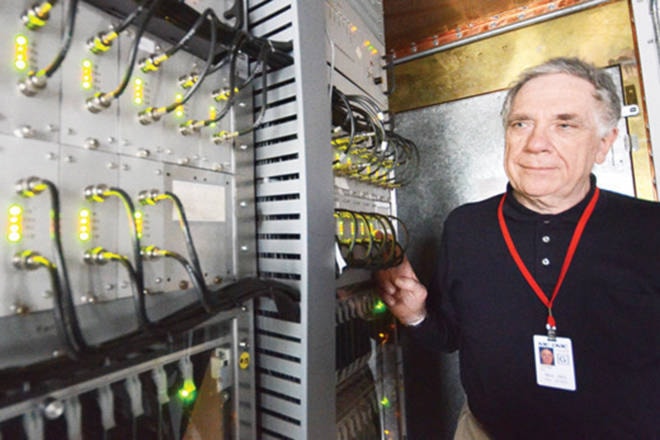Our Sun formed some 4.5 billion years ago, from the collapse of a big cloud of gas and dust.
This material also formed the Earth and other planets. However, although that was definitely the beginning for us, the universe began just under 14 billion years ago, almost nine billion years earlier, in an event we call — inaccurately — the Big Bang.
Logic suggests there must have been earlier generations of stars. Evidence for this starts here on Earth. Our planet formed from the same birth cloud as the Sun, and is made of silicon, oxygen, iron, carbon and all the other elements. All living creatures are made from those raw materials. When we analyze the light from the Sun, we see evidence the Sun contains the same mixture.
The universe started very hot and very dense. It expanded and cooled, and eventually reached a temperature where the primordial soup of elementary particles could form at least the toughest atoms: hydrogen, helium and some lithium. By the time the temperature had fallen to where other atoms could form, all the raw materials had been used up. Consequently, the first stars formed from the collapse of clouds made up from just those three ingredients.
Stars produce energy by turning hydrogen into other elements. When stars die, these waste product elements are ejected into space, enriching the clouds of material from which new stars form. Interestingly, the elements produced by a star’s energy production stay in the centre. They don’t find their way to their outer parts — the parts we can observe. Any elements we detect must have come from the birth cloud, which contained elements produced by earlier generations of stars.
Since the light from the most distant galaxies takes billions of years to get here, we see them as they were billions of years ago, when they were younger. As we push outwards to greater and greater distances, we see how things were further and further into the past. The most distant galaxy found so far was detected with the Hubble Space Telescope. It is called GN-z11, and we see it as it was a mere 400 million years after the Big Bang. It is brimming over with hot, young stars, all busily producing the ingredients for making planets.
The very oldest stars we have found so far lie in the central parts of our own galaxy, the Milky Way. By looking at the relative concentrations of radioactive elements and their decay products, we deduce the stars to be 13.2 billion years old, having formed only a few hundred million years after the Big Bang. These are dwarf stars, which have extremely long lives. Their brighter siblings blew up long ago.
These ancient stars did not manufacture those radioactive elements themselves; they inherited them. Moreover, since the very first stars in the universe formed 200 million years after the Big Bang, there were only a few hundred million years for stars to make the elements and then blow up, dispersing their material into space and enriching the potential birth clouds for following generations of stars, and possibly for making planets.
Heavy elements such as uranium are produced in supernova explosions, which is how very massive stars end their lives. These stars are extremely profligate with their fuel, shining very brightly and then exploding after a life as short as tens of millions of years. Therefore those old stars we see in the centre of the Milky Way must be survivors of the second or maybe the third generation. Our galaxy is probably not unique. Other galaxies must have their own stellar Methuselahs. It’s just that we cannot see them with our telescopes.
Top of FormMars lies low in the Southwest after sunset. Jupiter rises soon after dark and Saturn in the early hours. The Moon will reach First Quarter on the April 3.
Ken Tapping is an astronomer with the NRC’s Dominion Radio Astrophysical Observatory, Penticton.



